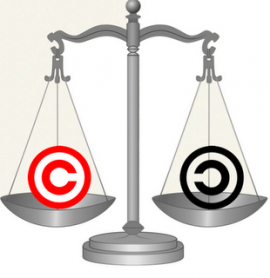
Dilution by Blurring and Tarnishment

Popular In Trademark
Trademark Registration Overview How To Trademark A Name Trademark Symbols Remedies To Trademark Infringement Defenses Against Trademark Infringement Paris Convention Tm Symbol How To Report Trademark Infringement Trademarks Common Law And Trademarks Types Of Passing Off The Madrid Agreement Overview How To Register A Trademark
Trademark Dilution Revision Act of 2006 provides for a comprehensive definition of the different types of trademark dilution as recognized by federal law. Such definitions have amended the Trademark Act of 1946, and thus rendering the Dilution Act of 1996 obsolete and outdated. Provisions regarding trademark dilution are addressed under the second section of the new act, titled Dilution by Blurring;
Dilution by Tarnishment. Firstly, the definition of what constitutes a famous trademark is addressed, for it is in direct application to the revisions concerning trademark dilution by blurring and tarnishment. A trademark is considered famous if it is regarded as a widely recognized mark by consumers, so much so, that the mark immediately connotes the origin of the consumer's goods and products.
Furthermore, the Revision Act also provides for qualifications that render a particular mark as famous that may be considered in terms of court proceedings and lawsuits concerning trademark dilution:
• The actual length that the trademark has been in use
• The extent to which such trademark has been used
• The location in terms of advertisement or marketing, and the extent such mark has been employed in those areas
• The actual amount and volumes of product sales under such a trademark
• The extent of actual recognition of the mark itself
• The consideration of the means under which trademark was properly registered at the federal level; in other words, the appropriate trademark legislation in accordance to the date of actual registration.
The clear definition of a famous mark or trademark is necessary for the Revision Act will only consider suits levied or brought under such considerations of a particular trademark. Furthermore, for the purpose of trademark dilution by way of blurring or tarnishing, such acts must have considerable effects on a trademark in order to provide for compensation or injunction relief, for their definitions comprise the insinuation that the damages are viable or justified because of the trademarks fame or recognition.
The definition of blurring under the Revision Act stated as a marks association with a famous mark because of similarities in composition or design which impairs or occludes the distinct or inherent fame or recognition of the famous mark. Trademark dilution by blurring is also subject to certain factors in rendering court decision:
• How similar the mark and the famous mark actually are
• The degree of the famous marks actual distinctiveness or fame
• The extent to which the famous mark is being used
• The level of recognition of the famous mark by the general public
• Whether the mark in question was created to correlate an association with the famous mark
• The actual extent of association between the mark and famous mark or brand name
Trademark dilution by tarnishment differs from blurring because blurring simply refers to the obstruction of the famous mark, while tarnishment can actually incur feasible damages. Tarnishment is defined as the association that mark has upon a famous mark in terms of its similarities, and such mark harms the reputation or prestige associated with the particular famous mark.
The considerations regarding the association or relationship between the mark and famous mark may also be subjected to the above factors in court decisions or matters. However, there are certain circumstances or situations that are exempt from be liable to trademark dilution, whether by blurring or tarnishment. These particular acts are not considered to be trademark dilution:
• Fair use of a famous mark in association with advertising or marketing, as well as parodies, criticisms, or comments relating to the famous mark or the actual owner of such mark.
• News reporting and news commentary
• non-commercial uses of the famous mark
Lastly, the second section also address the various types of remedies that apply to trademark dilution lawsuits. Injunctive relief is still granted to owners of famous marks against owners of marks that are likely to cause dilution of the famous mark.
The important revision in this matter is that no actual proof is dilution is necessary, neither is the assertion of actual or possible consumer confusion for this provision; actual monetary damages need not to be proven under this juncture as well.
A deviation from prior trademark dilution legislation is that additional remedies may be granted along with injunctive relief. These remedies are subject to:
• If the mark in question was used or implemented on the commercial level after the date of the passage of this act
• If the owner of the mark in question intended to establish a correlation to the famous mark
• If the owner of the mark willfully employed the mark with intent of ill use or harm toward the famous mark
With the new revisions enacted by the Dilution Revision Act, certain issues were addressed that proved to be of concern in terms of interpretation of legislation, or simply, the lack there of.
In successfully defining trademark dilution by way of blurring and/or tarnishing, as well the consideration factors of what constitutes a famous mark, future cases relating to this matter may prove to be more easily tried, and avoid confusing or inappropriate applications of trademark law.
NEXT: Facts of the Trademark Dilution Revision Act of 2006




















